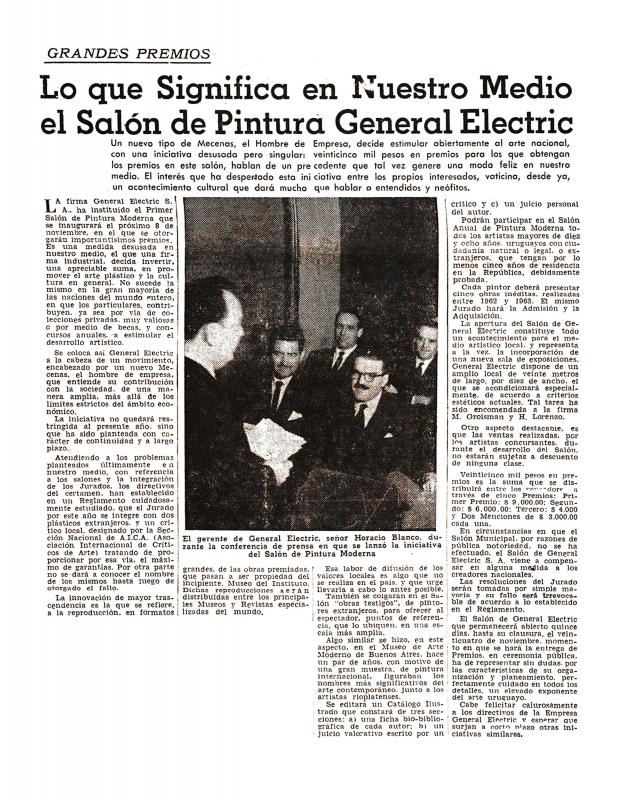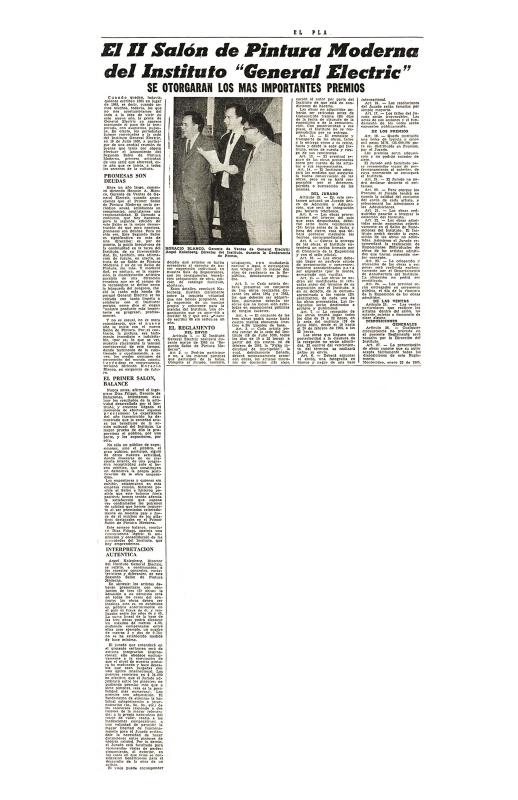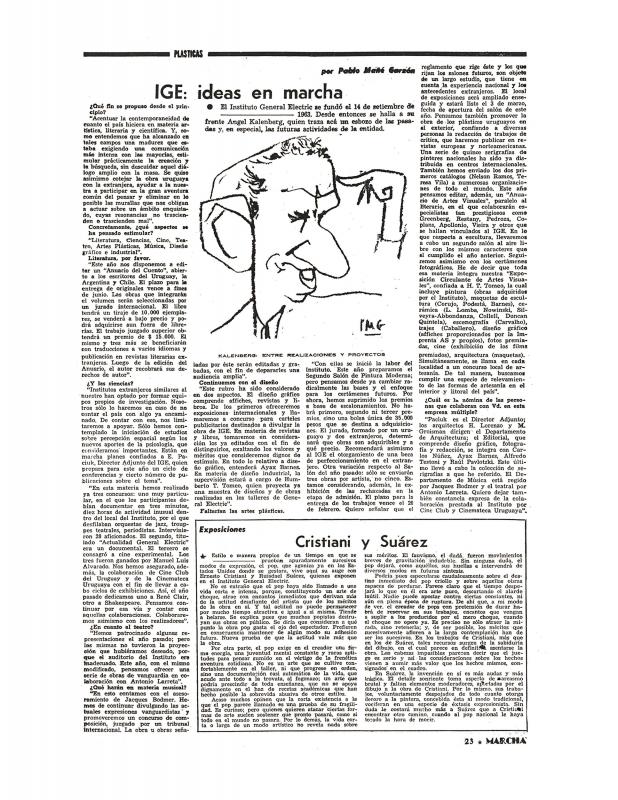The IGE (Instituto General Electric [General Electric Institute]) was a private institution in Montevideo that was dependent on its corporate American company of the same name and international renown. It defined itself as a “promoter of contemporary culture.” Its activities centered around artistic and business culture and was directed toward the social sectors of the middle class that supported the diffusion of new artistic networks. The IGE was inaugurated in Uruguay on September 14, 1963, founded with its own resources similar to Anglo-Saxon cultural foundation models. The sponsored activities promoted “modern art” with an avant-garde ideology expressed through a critique and geared toward specific exhibition audiences, art halls, artistic performances, and concerts. One of the objectives of the IGE was to match Uruguayan contemporary art with artistic events abroad, so that the artists of the country were also participating in the arena of modern ideas on an international level. Some teachers and members of the panel of judges were foreigners who had realized aspects of their respective developments abroad. The director of the IGE was Ángel Kalenberg (b. 1936) who pushed the institute toward the path of public diversity and media presence. The anonymous author of this article, in narrative format, reports on the particulars of an event that took place at the IGE in June of 1964. He states that the event took place in order to stimulate the relationship between industrial production and “artistic events.” He describes the IGE as a place where classes and groups were made to compete for the appropriation of both the artistic product and as well as consumer goods. In this way, the cultural status of the artist, the manufacturer, the seller, and the consumer, in relation to art as well as to other household goods, is approved for sale. The relationship between “business production” and “art” described in the article corresponds to the model of consumerism where there is a system of integration and communication with the artistic field. “Finding a heart in the oppressive hall, the artist without distinction of language hastens his innermost whit of fiber, the exhibition showcases without distinction the names as a measure of progress or delving into its creativity with the intent of accentuating it values.” It was in fact this pure and simple axiology from where the interrelation between the workman, the vendor, and director emanated, consequently conjugating the net productivity as a symbol of self-improvement. It was an undeniable idealism where all values (manifested or not) are serving in a “positive” way to the community. [Please refer to the ICAA digital archive for the following texts: “Lo que significa en Nuestro Medio el Salón de Pintura General Electric” (untitled) (doc. no. 1244873), “El II Salón de Pintura Moderna del Instituto General Electric” (untitled) (doc. no. 1244790), and “IGE: Ideas en Marcha,” by Pablo Mañé Garzón (doc. no. 1244837)].



